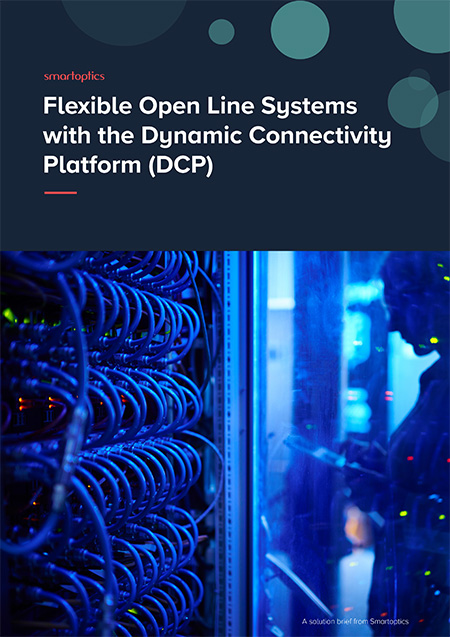SOFTWARE-DEFINED NETWORKING (SDN) EXPLAINED
As enterprise and service provider networks have grown in size and scale, they have also become more complex and challenging to manage. One of the main drivers of this complexity has been the rise of disaggregated networks comprising components from different vendors with separate management solutions. Software-Defined Networking (SDN) can help make network management easier and enable vendor-neutral solutions, all to provide greater flexibility, choice and growth opportunities. As a result, SDN is an enabler for trends such as open networking, digital transformation and IoT.
What is Software-Defined Networking (SDN)?
Software-Defined Networking (SDN) enables central management of network elements across vendors using the same controllers. This is made possible by virtualizing the network hardware and physically separating the network control plane from the forwarding plane. Also known as the data plane, the forwarding plane forwards network packets along the network. The control plane routes the network traffic and consists of one or more network controllers.
From a management point of view, the physical network elements can be considered ‘dumb’ and designed to be managed from this SDN network manager where the whole intelligence is incorporated over standard protocols. This opens the door to greater monitoring capabilities, scalability, control, vendor-neutrality and productivity with open network management solutions. All of this is well aligned with the needs of growing enterprise data centers.
How SDN enables open networking
Open networking is a broad term that usually involves using open APIs, open industry standards and open-source resources to create an open network ecosystem. SDN is a key enabler of open networking by making it possible to overcome incompatibility issues across vendors. This is done by providing instructions from SDN controllers under open standards instead of relying on differing vendor-specific protocols.
This multi-vendor interoperability frees up network administrators to mix and match best-in-class components from a variety of vendors.
The difference between SDN and NFV
Software-Defined Networking and Network Function Virtualization (NFV) both use virtualization to make network resources manageable across hardware platforms and devices. SDN separates the network control plane from the forwarding plan (or data plane) to create a virtual control plane for centralized management. Meanwhile, NFV uses a hypervisor to remove the dependency of network functions from physical, proprietary hardware.
The difference here is that SDN manages an entire network from a broad perspective while NFV focuses on making specific network functionalities easier to control and scale. For instance, NFV moves firewalls, network address translation, load balancers and similar functions into virtualization environments to make them easier to manage. SDN and NFV can be used together advantageously to optimize network management. Both technologies also play a key role in reducing dependence on vendor-specific hardware with virtualized, open software-based network management solutions.
The difference between SDN and SD-WAN
A Software-Defined Network (SDN) and a Software-Defined Wide Area Network (SD-WAN) are both based on similar principles of separating the control plane from the forwarding plane and adding intelligence to networking management. SDNs are made for Local Area Networks (LAN) while SD-WANs connect multiple enterprise locations across a wider geographic area in a WAN. SD-WANs are configured by a vendor, which may be more convenient for some enterprises. On the other hand, SDNs are freely configurable by network administrators, offering more freedom and control.
What is the SDN OpenFlow protocol?
OpenFlow is a communications protocol designed for SDNs that provides access to the forwarding plane of network resources. OpenFlow is the first standard interface for separating the network control and data planes and is championed by the Open Networking Foundation as an enabler of SDN. There are now other protocols available as well, but OpenFlow still serves as a foundation for building various SDN solutions.
The benefits of SDN
The SDN market is forecast to grow by 19% from 2020 to 2025. This growth is being driven by several SDN benefits for enterprises and operators.
- Increased productivity: Whereas managing hardware from different vendors may have required logging into and configuring several different interfaces, SDN eliminates this issue by creating a single software-based interface. This reduces the complexity of network management and improves the user experience, allowing network administrators to work more productively.
- Increased security: Access rights, user privileges, firewall settings and other security configurations are all easy to automate across devices and virtual machines in an SDN. The enhanced visibility and monitoring capabilities of SDNs also reduce security risks.
- Increased cost efficiency: SDNs are often less expensive than standard industry hardware because you can run several functions on a single off-the-shelf server. As a result, resources can be consolidated because less physical network infrastructure is needed. This also leads to lower space and power consumption.
- Increased scalability: Instead of having to first purchase more hardware, SDNs make it easy to scale up or down as needed. This great flexibility is similar to cloud computing principles and is augmented by self-service provisioning of network resources.
- Increased control: SDNs give network managers greater control over their networks with central management and direct programmability. By eliminating dependence on proprietary software, managers have the power and flexibility to write SDN automation programs themselves. This also enables more dynamic optimization and configuration of network resources.
SDN and digital transformation go hand in hand
After initially being deployed by tech giants like Google to manage their internal networks in the first wave of digital transformation, SDN is becoming increasingly widespread in enterprise data centers. Part of the reason is the pull of the increasingly mature digital transformation trend toward cloud-like infrastructure and automation. For instance, SDN enables automated provisioning and can be integrated with cloud orchestration platforms.
SDN is also crucial to the IoT and associated edge computing trend. For instance, some SDN controllers are intelligent enough to automatically detect network congestion and take actions to prevent latency in remote and edge components. SDN also makes it easier to secure, monitor and segment IoT devices across a network.
Smartoptics is pioneering SDN-driven open networking
At Smartoptics, we’re closely following and supporting the trend toward open networking and disaggregated networks trend, which SDN is a key enabler for. We want you to choose our networking components because you want to, not because you have to. That’s why we give you the freedom of choice with support for SDN-driven centralized, open management solutions for our latest open line systems and DWDM ROADMs.
Smartoptics’ Dynamic Connectivity Platform (DCP) is designed for active open line systems of all types. The DCP-R DWDM ROADM family and the DCP-F family of pluggable, active optical units both embrace SDN principles. Read more here.

Get the DCP solution brief
Learn more about the Dynamic Connectivity Platform (DCP)

Get the DCP solution brief
Learn more about the Dynamic Connectivity Platform (DCP)
Related articles

What is a SAN and how does it protect mission-critical workloads?

What is Fibre Channel used for?
